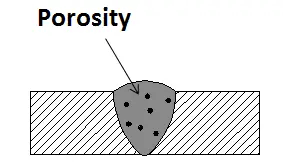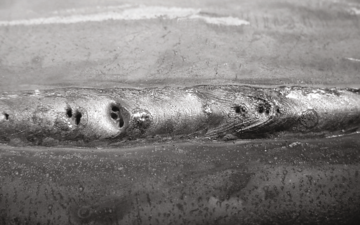How to Recognize What is Porosity in Welding and Improve Your Technique
Comprehending Porosity in Welding: Exploring Causes, Effects, and Prevention Techniques
Porosity in welding is a relentless challenge that can significantly impact the top quality and integrity of welds. As specialists in the welding industry are aware, recognizing the causes, impacts, and avoidance methods connected to porosity is crucial for achieving durable and trusted welds. By delving right into the origin of porosity, analyzing its destructive impacts on weld top quality, and discovering effective prevention approaches, welders can improve their expertise and abilities to produce high-quality welds continually. The elaborate interaction of variables adding to porosity needs a detailed understanding and a proactive strategy to guarantee successful welding outcomes.
Common Reasons For Porosity
Porosity in welding is mainly triggered by a combination of variables such as contamination, improper protecting, and insufficient gas coverage during the welding procedure. Contamination, in the kind of dust, grease, or rust on the welding surface area, produces gas pockets when heated up, resulting in porosity in the weld. Improper protecting happens when the protecting gas, commonly made use of in procedures like MIG and TIG welding, is unable to fully shield the liquified weld pool from reacting with the bordering air, resulting in gas entrapment and succeeding porosity. Furthermore, inadequate gas coverage, frequently due to incorrect circulation prices or nozzle positioning, can leave parts of the weld unprotected, enabling porosity to form. These elements collectively add to the formation of gaps within the weld, deteriorating its stability and possibly causing architectural issues. Understanding and attending to these common reasons are vital steps in stopping porosity and guaranteeing the top quality and strength of welded joints.
Results on Weld Quality
The presence of porosity in a weld can considerably compromise the overall quality and integrity of the welded joint. Porosity within a weld develops gaps or dental caries that deteriorate the framework, making it much more prone to splitting, rust, and mechanical failure.
Furthermore, porosity can impede the efficiency of non-destructive testing (NDT) techniques, making it testing to identify various other problems or gaps within the weld. This can result in significant safety and security worries, specifically in critical applications where the architectural stability of the welded parts is critical.

Avoidance Techniques Introduction
Provided the detrimental influence of porosity on weld top quality, reliable avoidance techniques are crucial to keeping the architectural integrity of welded joints. Among the main prevention strategies is extensive cleansing of the base products before welding. Impurities such as oil, grease, corrosion, and moisture can add to porosity, so ensuring a clean work surface area is necessary. Proper storage space of welding consumables in completely dry problems is also vital to stop dampness absorption, which can Discover More result in gas entrapment during welding. Additionally, choosing the appropriate welding specifications, such as voltage, current, and travel rate, can aid lessen the threat of porosity formation. Making certain sufficient securing gas circulation and protection is an additional crucial avoidance technique, as inadequate gas coverage can cause climatic contamination and porosity. Appropriate welder training and qualification are essential for applying preventive procedures effectively and constantly. By including these prevention techniques into welding methods, the incident of porosity can be dramatically reduced, resulting in more powerful and extra reputable bonded joints.
Significance of Proper Protecting
Appropriate protecting in welding plays an essential duty in stopping atmospheric contamination and ensuring the integrity of welded joints. Shielding gases, such as argon, helium, or a combination of both, are generally utilized to safeguard the weld swimming pool from reacting with elements airborne like oxygen and nitrogen. When these reactive components enter contact with the hot weld pool, they can cause porosity, bring about weak welds with minimized mechanical buildings.

Poor shielding can result in various defects like porosity, spatter, and oxidation, compromising the structural honesty of the welded joint. Therefore, sticking to proper protecting techniques is important to generate premium welds with marginal problems and make sure the longevity and dependability of the bonded parts (What is Porosity).
Surveillance and Control Approaches
How can welders efficiently monitor and control the welding process to make certain ideal outcomes and protect against issues like porosity? By continually checking these variables, welders can recognize variances from the optimal problems and make immediate changes to protect against porosity development.

Furthermore, applying correct training programs for welders is crucial for checking and managing the welding process properly. What is Porosity. Educating welders on the significance of maintaining regular specifications, such as proper gas securing and travel rate, can aid prevent porosity concerns. Routine assessments and qualifications can likewise make sure that his explanation welders excel in tracking and regulating welding procedures
Additionally, making use of automated welding systems can enhance monitoring and control abilities. These systems can precisely control welding parameters, lowering the possibility of human mistake and making sure consistent weld high quality. By incorporating sophisticated surveillance innovations, training programs, and automated systems, welders can successfully check and manage the welding procedure to minimize porosity defects and attain high-quality welds.
Conclusion
